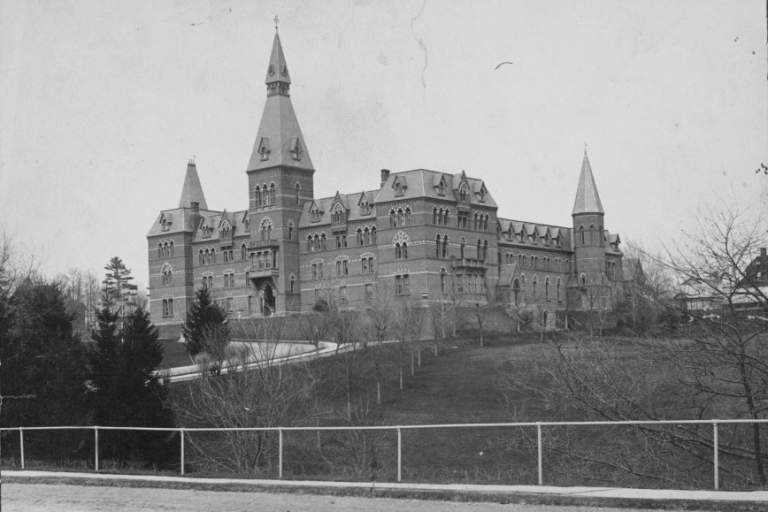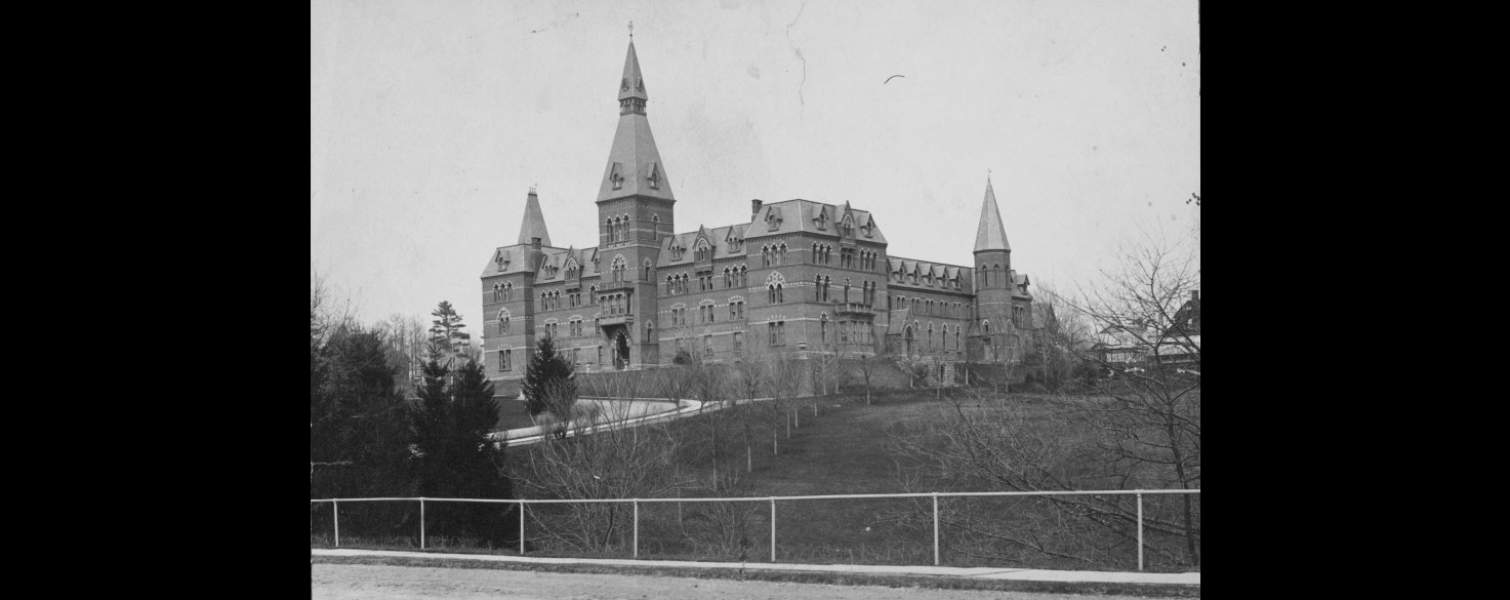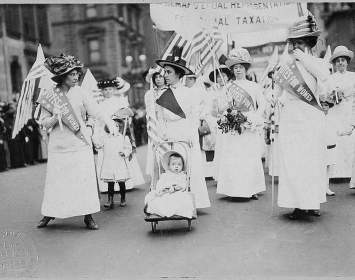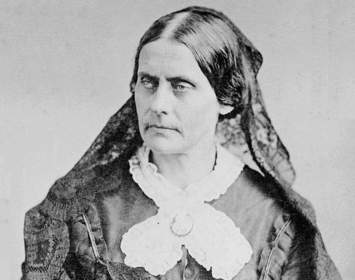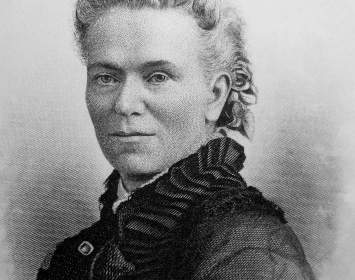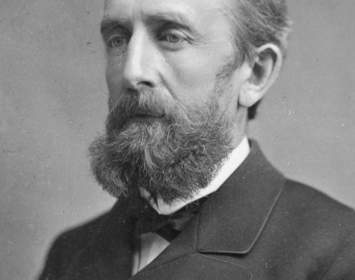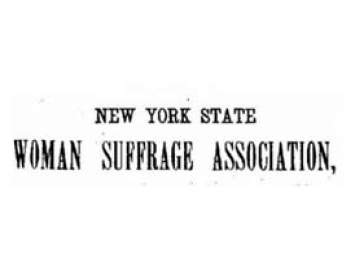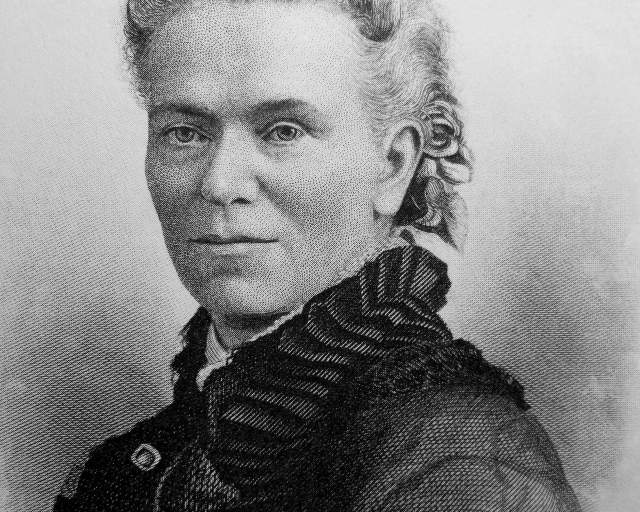Sage College, constructed to house women students at Cornell University, was the site of two events connected to the woman suffrage movement. (Nineteenth-century practice was to use the singular, woman, when referring to women as a class; using the plural, women, became preferred only in the twentieth century.)
Gage at Sage College. On Saturday, February 26, 1881—shortly before the publication of Volume I of The History of Woman Suffrage, which she co-edited with Susan B. Anthony and Elizabeth Cady Stanton—Matilda Joslyn Gage lectured on the topic "Woman Suffrage" in the Botanical Lecture Room of Sage College. The lecture was sponsored by the university's Social Science Club. The Cornell Daily Sun reported that “A large audience greeted Mrs. Gage on Saturday evening. Her discourse was well received.”
Anthony at Sage College. The twenty-sixth annual convention of the New York State Woman Suffrage Association (NYSWSA) was held at Ithaca on Monday through Friday, November 12–16, 1894. On the afternoon and early evening of Wednesday, November 14, 1894, suffrage leaders Susan B. Anthony and Anna Howard Shaw toured the nearby Cornell University campus. They were accompanied by Ithaca mayor Clinton D. Bouton and Cornell president Jacob Gould Schurman. The party arrived at Sage College in time for dinner. After the meal, Shaw returned to the Lyceum Theater downtown for the Convention's evening session, at which she made a major address. Meanwhile Anthony lingered at Sage College, engaging its residents in a warm and leisurely discussion.
The Building and the Site. Never actually a "college," Sage College was instead Cornell's first women's residence and dining hall. It was erected shortly after the university went coeducational.
The edifice was designed by Charles Babcock—Cornell’s first professor of architecture and dean of the nation's first school of architecture, 1871–1896—with input from Cornell's first president, Andrew Dickson White. (An architecture aficionado, White had donated his personal architecture library to begin the creation of Cornell's School of Architecture.) Sage College and the nearby Sage Chapel were both designed in a similar Gothic style influenced by the teachings of John Ruskin. Both buildings were completed in 1875.
In addition to sleeping rooms, a dining hall, and parlors, Sage College boasted an impressive greenhouse at which the university conducted botany classes. This area was the site of Gage's lecture.
An addition, presumably also designed by Babcock, was completed in 1896.
The central tower was removed in 1950.
At some point during the twentieth century, Sage College was converted into a dormitory for graduate students.
In 1996, the building was demolished except for its historic exterior walls. Those walls formed the core of Sage Hall, designed by the Hillier Group. During two years of reconstruction, the central tower was rebuilt and various modern-style additions were made. Since 1998, Sage Hall has served as the home of the S. C. Johnson Graduate School of Business.
Thanks to Elaine Engst and Carol Kammen for research assistance.
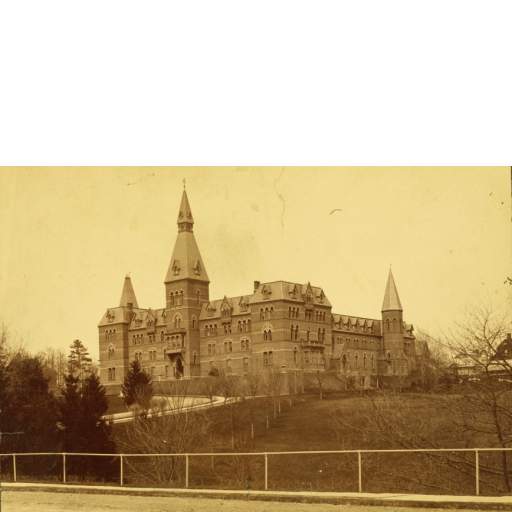
Sage College, constructed 1875
Sage College, Cornell's self-contained women's residence and dining hall, was designed in a Gothic style by architecture professor Charles Babcock, with input by university president Andrew Dickson White. Construction was completed in 1875.

Sage College in 1905
1905 hand-colored postcard image of Sage College.
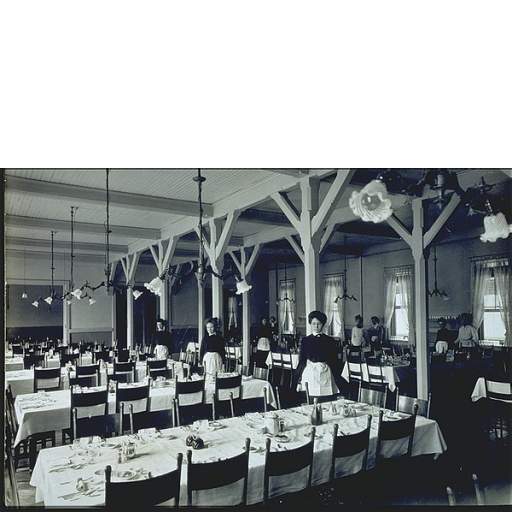
Sage College Dining Hall
Presumably this is the dining hall at which suffrage leaders Susan B. Anthony and Anna Howard Shaw, Ithaca mayor Clinton D. Bouton, and Cornell president Jacob Gould Schurman dined following their campus tour on Wednesday, November 14, 1894.
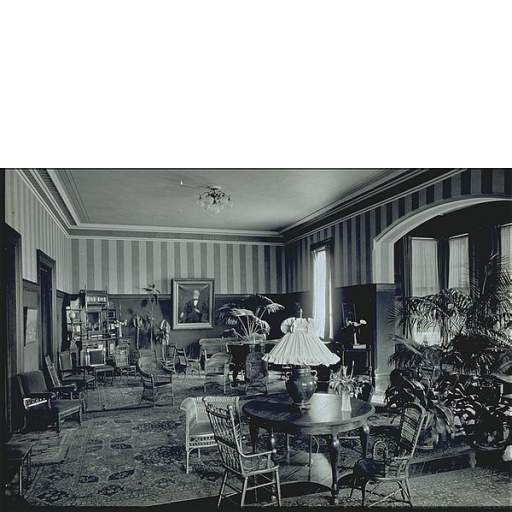
Sage College Drawing Room
This may have been the room in which Susan B. Anthony held a long and well-remembered conversation with Sage College residents following the dinner.
Associated Causes
Associated Historical Events
Matilda Joslyn Gage Speaks on Woman's Rights at Sage College
February 26, 1881
Susan B. Anthony Dines/Speaks at Sage College
November 14, 1894
Twenty-Sixth NY State Suffrage Convention
November 12–16, 1894
